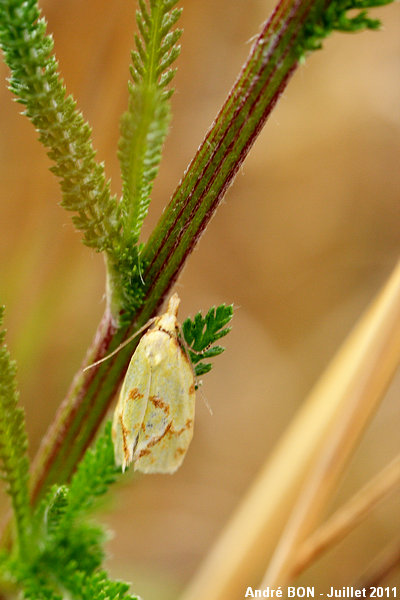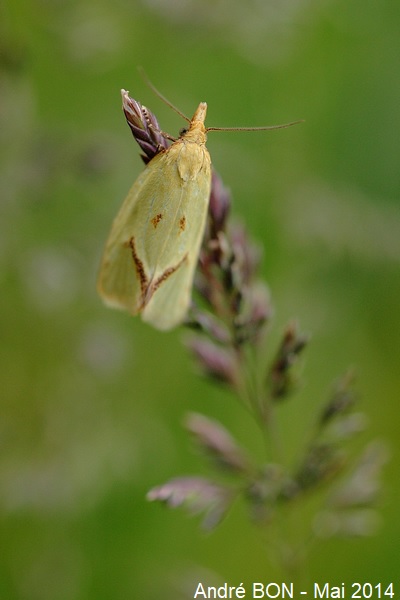

| Hook-marked Straw Moth (Agapeta hamana (Linnaeus, 1758)) |


|
|
Scientific name: Agapeta hamana (Linnaeus, 1758) Common name: Hook-marked Straw Moth French name: Euxanthie du Chardon Order: Lepidoptera Suborder: Microlepidoptera Family: Tortricidae Subfamily: Tortricinae Wingspan: 15-24 mm. Biotope: Meadows, waste lands, parks and gardens and any place where Thistles grow. Geographic area: Europe, Asia Minor. Flight time: June to August. Number of generations : 1 Caterpillar: Caterpillars, after full growth, over winter under the soil inside a silken cocoon. Adults will emerge next May or June. Host plant: Thistles (Carduus sp.). Caterpillars feed on roots. |
The Hook-marked Straw Moth shows pale yellow or bright yellow fore wings with pale brown or dark brown marks. When at rest, you can distinguish a V-shaped mark whose point is located at the tornus of the fore wings. You can also find variable marks in the median area, often two spots or a curved stripe located above the V-shaped mark. You can also find some variable marks in the submarginal area. The hind wings are pale greyish brown with dark veins. The Sulphur Knapweed Moth (Agapeta zoegana) also shows yellow wings with brown marks. You can tell it apart with its brown tip on the fore wings marked with a large yellow spot. All this draws a brown ring shape on a yellow background. |
| [To know more about the Hook-marked Straw Moth] [Next picture] [Top] |

|
I like this small moth. The V-shaped mark, often below two spots of the same colour, makes me think to a smiling face. This is not well visible on this specimen. I will try to shoot more typical pictures. |
| [To know more about the Hook-marked Straw Moth] [Previous picture] [Top] |

|
Here is a better picture with the Hook-marked Straw Moth's "smile". |